When you’re trapped inside your own skull, staring up at flickering fluorescent lights in inpatient therapy, unpacking every bad decision like a suitcase rigged to blow, thinking about something as simple as a budget-friendly Class D amplifier isn’t just a distraction — it’s a brief, desperate act of rebellion. A flicker of clarity between the self-loathing, the pain of hurting others, the intense craving for biltong, and the crushing silence.
It’s a quiet middle finger to conformity and the beige, grinding drone of the status quo. Because sometimes survival means finding your fight in the small things — even if it’s just chasing cleaner sound through the chaos inside your head. It’s saying, Yeah, I’m still here. Still standing. Still not listening to vinyl on a Bluetooth pillow speaker. Still looking sideways at anyone who puts pineapple and ham on a pizza.
Rolling up to a Midsommar feast with pineapple pizza? That’s like showing up in a bear suit assembled from IKEA instructions—guaranteed to get you banned faster than you can say “flat-pack nightmare.” One’s a fast track to exile, the other’s a slow, painful Swedish puzzle from hell.

In a world that would rather grind you into sameness and call it balance, even the tiniest victories—a track that hits harder, a stereo image that finally makes sense—start to feel like survival. And let’s be honest: for some of us, survival isn’t a given. Not every escape is healthy, and I’ve taken enough bad exits to know that soundtracks can cut both ways.
If I’m going down, it’ll be with Eric Dolphy in one ear, Detroit upside down on the table, and the quiet satisfaction that I rattled a few cages on the way out. But don’t get excited—I’ve got at least another 50 in me.
I’ll be spending more time with Class D systems and focusing on real-world solutions—some affordable, some not so much. Hopefully that resonates with more readers, and if it leaves a few folks clutching their remotes and back issues of Stereophile and TAS, so be it. Because everybody counts, or nobody counts. Even audiophiles.
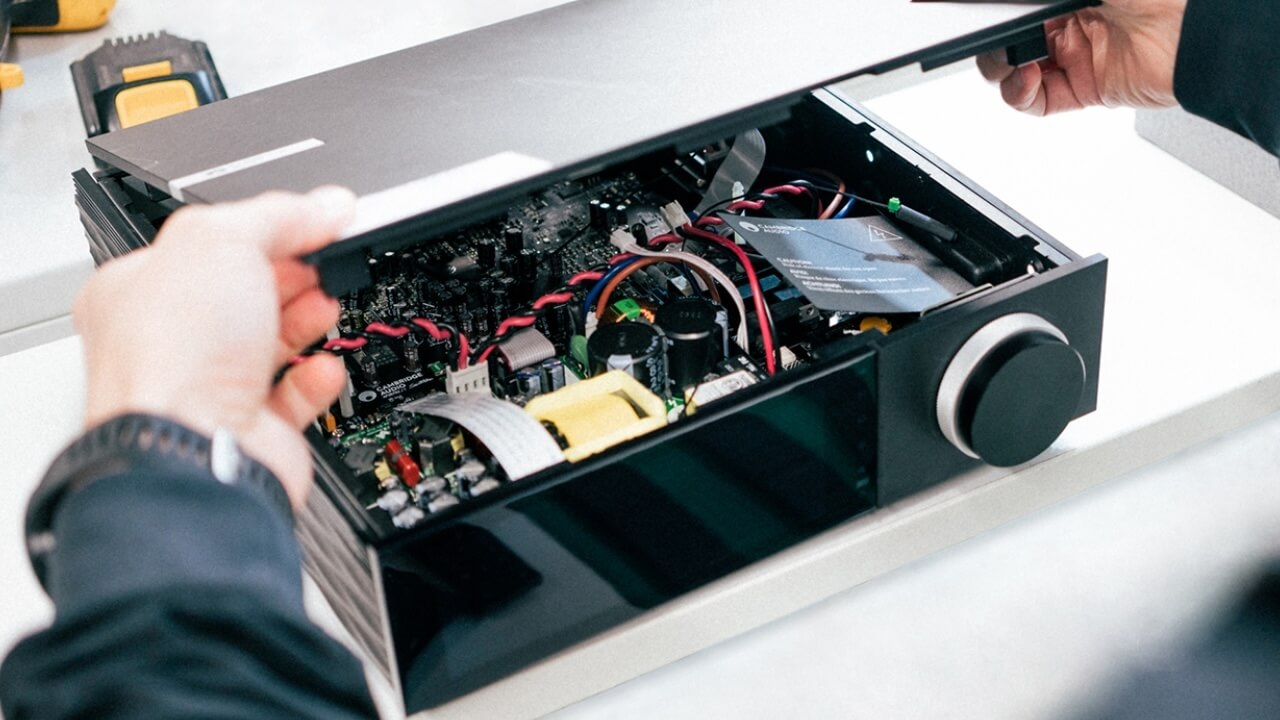
The reality? Class D is everywhere now. It’s in your TV soundbar, your wireless speaker, your portable amp, and yes, your 2-channel setup that doesn’t cost more than your mortgage. It’s clean, efficient, cool to the touch, and powerful enough to make your bookshelf speakers sweat. Whether it’s the NAD C 3050, the WiiM Amp Pro, or something cooking over at Orchard Audio or Topping—this isn’t a trend. It’s a takeover.
Class D amplification isn’t flashy. It doesn’t strut like vintage Class A iron or bask in the glow of $10,000 monoblocks. For years, the high-end audio aristocracy dismissed it as cheap, soulless, and only worthy of subwoofer duty—like a loyal servant too uncultured for the main system. Meanwhile, the rest of us were too busy actually listening to music to care.
Newsflash: The old world’s dead and buried. You can cling to your Levinsons and Brystons like the Empire clung to the Death Star—fragile, desperate, and doomed. Meanwhile, we’re already sliding through the cracks, hunting for something real while the old giants stumble and the upstarts sharpen their knives—Fosi, WiiM, and SMSL didn’t ask for permission, and they sure as hell aren’t waiting for an invite.

Today’s Class D isn’t just good enough. It’s better than good. It’s efficient, brutally honest, and about as subtle as Lord Flashheart crashing a poetry recital with an enlarged codpiece and a flask of gin. Whether it’s a $130 Aiyima blowing minds on Reddit or a $6,000 NAD Master Series working hard in your rack, Class D is everywhere. And it’s laughing all the way to the listening room.
Sure, the old guard will tell you it’s sterile. That it lacks “soul.” You know what else lacks soul? That $400 power bill after running your vintage monoblocks all night just to listen to Aja—again. Maybe try spinning something else. Like literally anything.
Meanwhile, Class D sits there sipping 50 watts, running cool, and pushing your Wharfedale or Q Acoustics bookshelf speakers with more control than your last group chat meltdown. Whether it’s the WiiM Vibelink Amp or the Marantz M1, they’ll soundtrack your afternoon while you pretend to care about your TPS Report—or craft your next snarky reply on X to someone insisting Hamas are not genocidal murderous filth.
And don’t get it twisted — this isn’t just about budget bangers. We’re talking $10K+ GaN amps from AGD, Purifi’s updated Eigentakt modules powering beasts from NAD, and ADH-powered boutique oddities from Devialet that look like Blade Runner props and sound like pure violence on tap.
Even darlings like Bel Canto, Lyngdorf, and McIntosh have joined the revolution. From basement studios to Aspen living rooms, Class D has made itself at home.
So whether you’re running a Fosi Audio that costs less than dinner and a couple bottles of Whispering Angel, or hauling in a 300-pound Mola Mola beast that makes your car look like the budget buy—it doesn’t matter. You’re in. The gates are open. The resistance isn’t coming—it’s already here.
And the best part? You don’t need a nod from some Burmester-loving gatekeeper tucked away in a Berlin penthouse, clutching silver cables like family heirlooms and acting like audio nirvana is reserved for the chosen few.
This is about enjoying music on your terms. You don’t need a five-figure amp or a badge of approval from the guy next to you at the hi-fi show—especially if he’s still bitter about the Armor All fiasco and green marker days. Build the system that works for you, and forget the noise.
And let’s be clear: the models we’ve covered so far? Just the tip of the iceberg. There’s more coming. A lot more.
You’ve all sent us your favorites, your horror stories, your hidden gems. We read them. We appreciate them. The rebellion doesn’t work without the resistance, and all of you are part of it. We’re going to build this list out. Send us what you think makes sense to you.
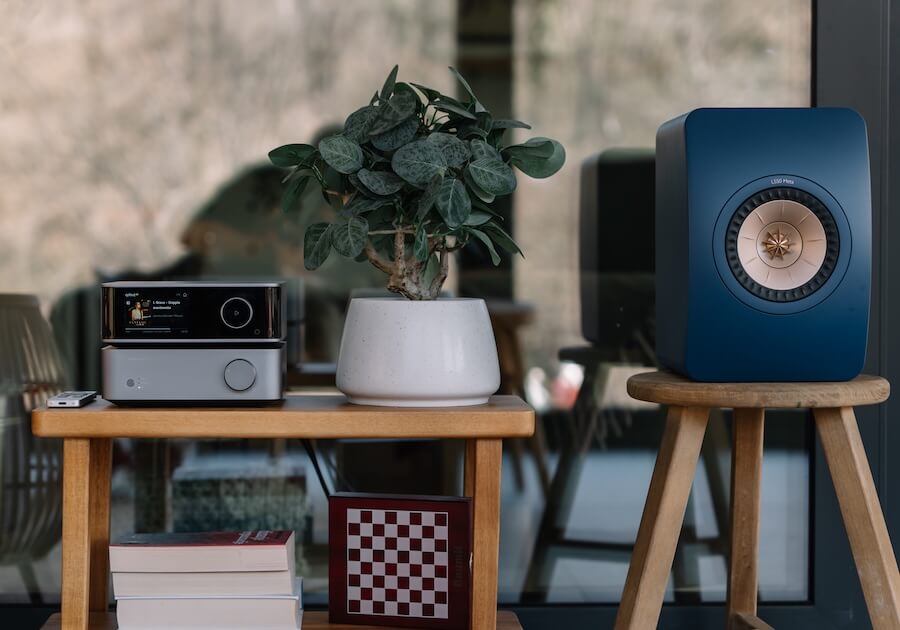
Under $500
Fosi Audio’s ZA3 is a compact, high-performance Class D amplifier featuring dual TI TPA3255 chips, delivering up to 155 W per channel (8 ohms) in stereo or 235 W in mono mode, with both balanced XLR and RCA inputs, a subwoofer output, and audiophile-grade components, all for under $130.
The SMSL A300 is a compact, high-performance Class D power amplifier utilizing Infineon’s digital amp chip to deliver 165W per channel at 4Ω (or 330W in bridged mono mode), featuring Bluetooth 5.0, RCA and USB inputs, subwoofer pre-out for 2.1 systems, and audiophile-grade components—all for under $200.
Topping’s PA5 II Plus is a compact, fully balanced Class D desktop amplifier delivering up to 125 watts per channel at 4Ω with THD+N <0.001%, featuring TRS and RCA inputs, a 12V trigger, and comprehensive protection circuitry—all for around $259.
The SMSL PA200 is a compact, high-performance Class D power amplifier featuring Infineon’s latest GaN FET technology, delivering 160 watts per channel at 4Ω in stereo mode or 400W in mono mode, with ultra-low THD+N of 0.00003%, equipped with TI’s PGA2311 volume control chip, and offering both RCA and XLR inputs—all for around $419.
The $379 WiiM Amp Pro is a compact, high-performance Class D streaming amplifier featuring a Texas Instruments TPA3255 chip delivering 60W per channel at 8Ω (120W at 4Ω), an ESS ES9038 Q2M DAC for 24-bit/192kHz playback, and advanced connectivity including Wi-Fi 6E, Bluetooth 5.3, HDMI ARC, and multiroom support.
The WiiM Vibelink Amp (read our review) isn’t just tossing watts around like a half-blind stormtrooper on payday. It delivers 100W into 8 ohms and 200W into 4, with actual control and finesse. Under the hood, it’s not bargain bin silicon—it’s rocking the ESS ES9038Q2M DAC, the same chip found in gear three times the price. Supporting cast? A TI PCM9211 for digital/analog duties, four TI OPA1612 op-amps, and a TPA3255 Class D amp chip that knows how to behave. Inputs include analog RCA, coax, and optical (24-bit/192kHz), plus banana plug-friendly binding posts.
No HDMI ARC, no USB, and no Wi-Fi—just a stripped-down, serious $299 amp that does its job without pretending to be a Swiss Army knife. Blackadder would approve: brutal competence without the faff.

Under $1,000
The NAD D 3020 V2 is a compact hybrid digital integrated amplifier delivering 30W per channel at 8Ω (105W dynamic at 4Ω), featuring a 24-bit/96kHz DAC, aptX Bluetooth streaming, MM phono input, optical and coaxial digital inputs, analog RCA input, subwoofer output, and a high-quality headphone amplifier—all for around $599.
The SVS Prime Wireless Pro SoundBase is a compact, high-performance streaming integrated amplifier delivering 150 watts per channel into 4Ω speakers. It features a 24-bit/192kHz DAC, supports high-resolution audio streaming via Wi-Fi, AirPlay 2, Chromecast, and Bluetooth, and includes HDMI ARC/eARC for seamless TV integration.
Additional connectivity options comprise optical, coaxial, and analog inputs, along with Ethernet and subwoofer outputs. The amplifier also offers six customizable presets, voice control via Alexa, Siri, and Google Assistant, and is priced at approximately $699.
For under $700, the Eversolo Play brings a lot to the table. It doesn’t just look sharp—it’s carved from a CNC-machined aluminum alloy chassis that gives it real heft and structural integrity. Up front, there’s a 5.5-inch HD display with a redesigned, user-friendly interface. Power output lands at 60 watts per channel into 8 ohms (or 110 watts into 4 ohms), making it a solid match for most entry to mid-tier passive speakers.
It supports DSD512 and PCM up to 32-bit/768kHz, with streaming options including TIDAL Connect, Qobuz, Deezer, Amazon Music, TuneIn, and Roon Ready. A pricier variant adds an internal CD drive for those still spinning discs.
The Marantz Model M1 is a compact streaming amp with brains, brawn, and no patience for clutter. It pumps out 100 watts per channel with just 0.005% THD, supports high-res audio (24-bit/192kHz PCM and DSD), and includes a subwoofer out with adjustable crossover and level trim for dialing in low-end balance like a pro.
Built on the HEOS platform, the M1 offers wireless streaming from services like TIDAL and soon Roon, and can link with up to 32 other HEOS-enabled Marantz devices for whole-home audio control. It’s all-digital from input to output, with Dolby Digital+ decoding, dialogue enhancement, and a virtual surround mode for streaming TV audio that doesn’t suck.
In short: just add speakers and you’re off. The $1,000 asking price gets you a serious system in a stealthy box.

Under $3,000
Orchard Audio Starkrimson Mono Ultra Premium incorporates gallium nitride (GaN) technology, which is designed to deliver 500 watts/1000 watts peak of output power into 4 ohms. It is also 2 ohms compatible. ($2,195 per channel)
The Lyngdorf TDAI-1120 ($2,399) provides 60 watts per channel with full streaming support via BluOS, AirPlay 2, Roon, and Chromecast. It also features RoomPerfect room correction, making it an excellent choice for audiophiles seeking clean sound and network capabilities.
The TEAC AP-507 ($2,199) features its custom-tuned new generation ‘NCOREx’ power amplifier module and can deliver a high power output of 170 watts per channel at 4 ohms and up to 350 watts at 8 ohms in BTL mode.
The NAD Masters M10 V3 is a compact, high-performance Class D streaming amplifier delivering 100 watts per channel into both 8Ω and 4Ω loads, featuring a Hybrid Digital nCore amplifier, a 32-bit/384kHz ESS Sabre DAC, BluOS multi-room streaming, Dirac Live room correction, HDMI eARC, and a 7″ touchscreen display—all housed in a sleek aluminum chassis priced at $2,999.

State of the Art
Cambridge Audio’s EVO 150 is what happens when a legacy brand finally realizes it’s not 1968 anymore. This all-in-one network amplifier ditches the stubbornness of the Edge A and CXA61 by actually including a built-in MM phono stage—because apparently someone at HQ finally discovered vinyl’s still a thing. Inside, it’s all business: a 150-watt Hypex NCore Class D amp delivers clean, muscular sound with the efficiency of a Victorian workhouse and none of the soot. You get Bluetooth aptX HD, AirPlay 2, Chromecast, HDMI ARC, and an ESS SABRE Reference DAC—because yes, people want convenience and resolution. The dual-concentric knob and 6.8″ display look sharp without begging for attention, and the swappable Richlite side panels let you pretend you care about the planet.
The NAD M33 V2 doesn’t show up with flash or ego — just better parts, smarter thinking, and the kind of obsessive detail work that makes a difference once you actually sit down and listen. This time around, NAD drops in MQA Labs’ new FOQUS and QRONO tech — fancy acronyms that still need to prove themselves. Pair that with an ESS SABRE ES9039PRO DAC, a next-gen ESS ADC, and Purifi’s updated Eigentakt modules, and you’ve got a signal path so clean and tight it could moonlight as a Swiss watch.
And then there’s the stuff that just works: BluOS for multi-room streaming that doesn’t require a PhD, Apple AirPlay 2, aptX HD Bluetooth, HDMI eARC, and compatibility with every smart home platform you’ve ever heard of (and a few you haven’t).
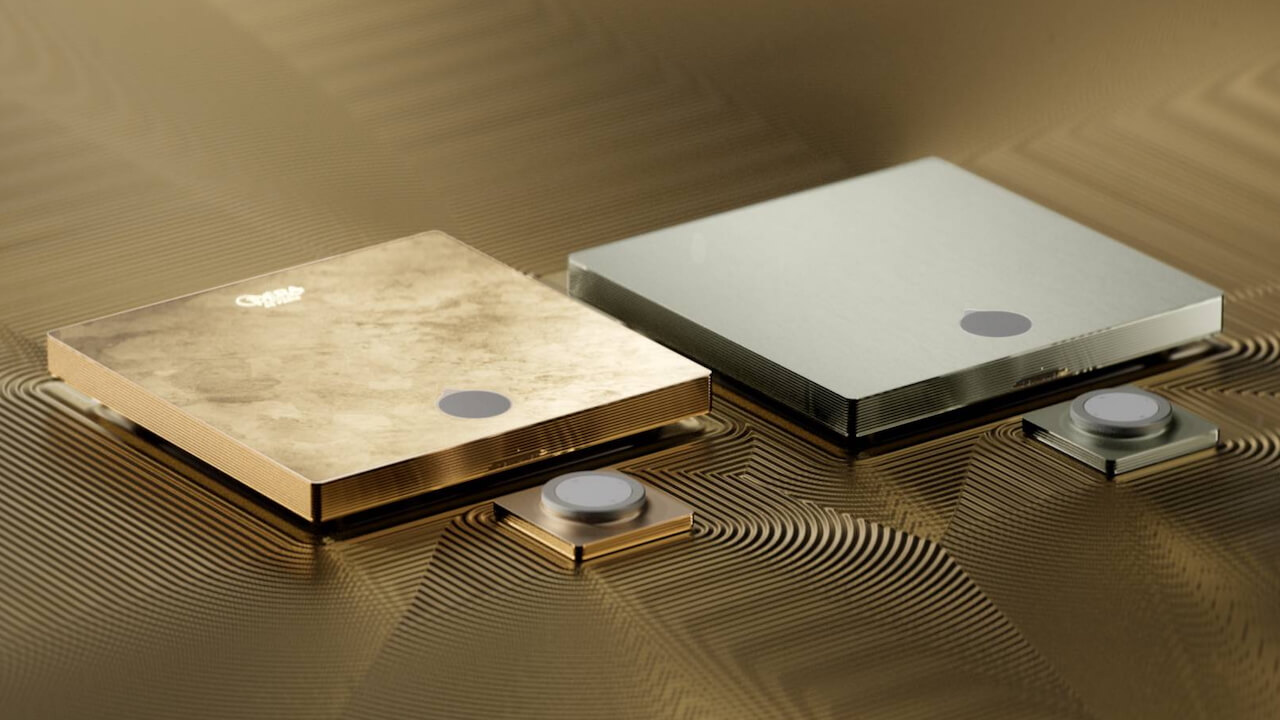
Devialet didn’t tiptoe into the hi-fi Class D world—they crash-landed in 2010 with the D-Premier and ADH tech, and now they’re back with the Astra Light Bronze and Astra Opéra de Paris editions, ready to rattle foundations and egos. These all-in-one French juggernauts fuse preamp, power amp, DAC, streamer, and phono stage into a single, digitally obsessive chassis. Running solo, the Astra delivers 2 x 300W into 4 ohms; go dual mono, and you’re looking at 2 x 600W of gilded fury. It’s high-end French firepower that hits harder than President Macron’s wife on a jetway in Vietnam.
Streaming support includes AirPlay, Google Cast, Roon Ready, Spotify Connect, TIDAL, and UPnP, with Wi-Fi 6 and Bluetooth 5.3 ensuring it’s ready for anything now—or next. The Devialet Astra comes in two flavors of excess: the Light Bronze Edition runs $20K solo (2x300W @ 4Ω) or $40K dual (2x600W @ 4Ω).
The Opéra de Paris Edition? $25K solo, $50K dual—each unit hand-gilded in 23-carat gold. Whether you’re storming the Bastille or just flexing in your listening room, this is sonic decadence with a Parisian accent.
The PS Audio Stellar M1200 is a hybrid monoblock amplifier that combines a 12AU7 vacuum tube input stage with an ICEedge Class D output module, delivering 600W into 8 ohms and 1200W into 4 ohms. It features a frequency response of 10Hz–45kHz (±3dB), a damping factor exceeding 1100, and a signal-to-noise ratio greater than 112dB. The amplifier offers both balanced (XLR) and unbalanced (RCA) inputs, with a sensitivity of 2.08V for rated output power. Priced at $13,996 per pair.
The AGD Gran Vivace MKIII Monoblocks are what happen when you take Class D, inject it with Gallium Nitride steroids, and stuff it into a vacuum tube just to flex. At $18,999/pair, they’re not exactly budget buys—but they don’t sound like any Class D amp you’ve ever heard either–and we say that from personal listening experience.
Each monoblock delivers 400W into 4 ohms with a whopping 50A peak output, powered by AGD’s proprietary GaNTube™ KT120 tech: a glass-encased power stage housing 600V GaN MOSFETs operating at 800kHz. That’s eight times the switching frequency of your average Class D slouch, resulting in ultra-low noise (≤ -130 dB), frightening efficiency (≥94%), and sonic transparency that feels more electrostatic than digital brute force.
Add in WBT binding posts, balanced and RCA inputs, medical-grade EMI filtration, and a remote trigger for convenience, and you’ve got a reference-level amplifier that doesn’t just challenge what Class D can do—it redefines it. This isn’t some sterile, overcooked engineering demo. The Gran Vivace sounds alive. And at this level, it had better.

The Marantz Model 10 is the brand’s most powerful integrated amp yet—250 watts into 8 ohms, 500 watts into 4—with distortion so low (0.005% THD) it barely registers. Built in partnership with Purifi, it’s a fully balanced, dual-mono beast with separate power supplies for each channel and a dedicated linear PSU for inputs.
Inside, Marantz’s latest HDAM circuitry delivers speed and clarity, while 30A of peak current ensures it drives anything without breaking a sweat. You get two XLRs, three RCA analog ins, and a serious MM/MC phono stage with adjustable impedance. Want more? Link up to four units via F.C.B.S. for bi-amping madness.
The porthole OLED display flips between volume, input, or full VU meter mode—because if you’re dropping $15K, it better look the part too.
The Bottom Line
Class D is no longer the runt of the audiophile litter—it’s the wolf in boutique sheep’s clothing. From the $299 WiiM Vibelink that punches way above its lunch money to Devialet’s $50,000 gold-plated Versailles fantasy, this tech has gone from budget compromise to high-end flex. And here’s the kicker: that trickle-down effect isn’t just marketing fluff—it’s real. The same silicon and engineering ethos powering five-figure amps is now sneaking into gear regular humans can afford. If your first taste of hi-fi comes from a Class D box with a stupid-good DAC and actual dynamics, you’re not “settling”—you’re waking up. Welcome to the revolution.
Related Reading:
- The Empire Burns at One Watt: Class D Is the Fire
- Devialet Astra & Astra Opéra de Paris: Storming the Bastille of Integrated Amplifiers, One Decibel at a Time
- Mein Tweeter: Notes from the Shallow End of European Hi-Fi
- Class D Haters, Sit Down: Orchard Audio’s New Starkrimson 25 Mono Premium GaN Amp Is Here to Wreck Your Bias
- Top Affordable Hi-Fi Brands Leading The New Golden Age Of Audio In 2025


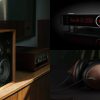
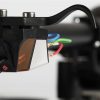
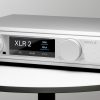
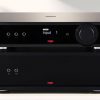
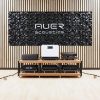
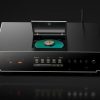
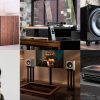
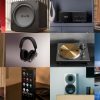

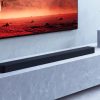
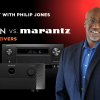
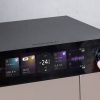





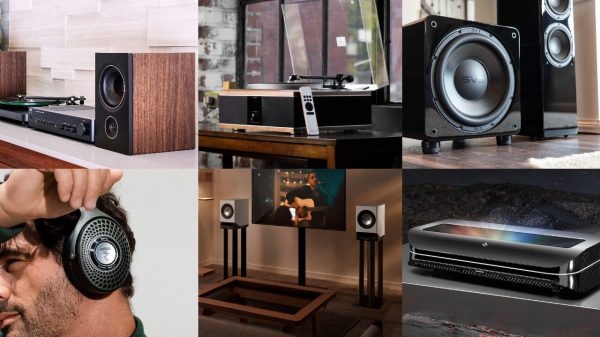
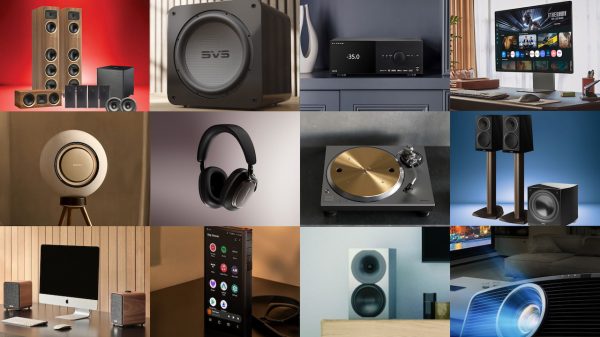
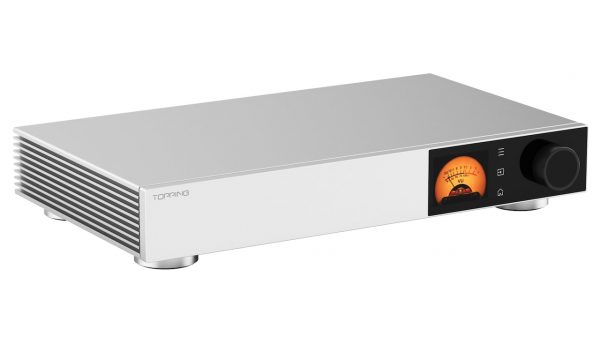
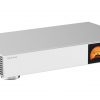

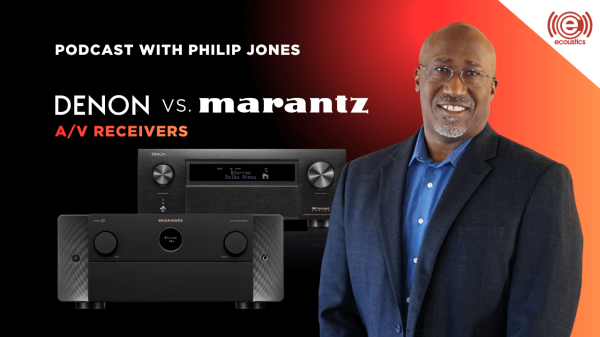

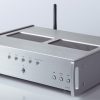
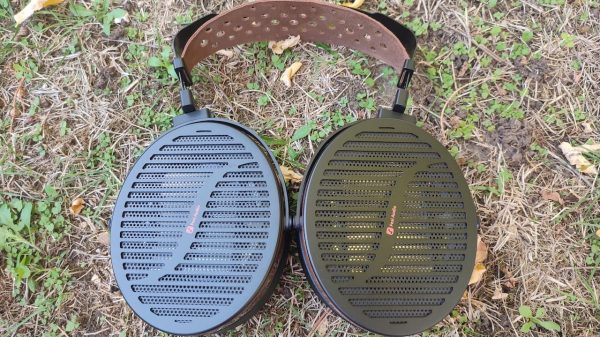
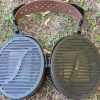
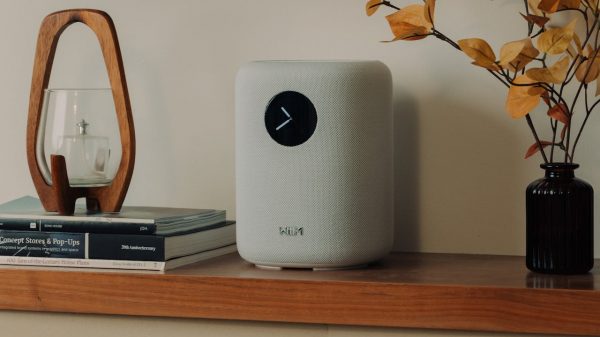












Anton
June 2, 2025 at 6:38 pm
“and about as subtle as Lord Flashheart crashing a poetry recital with an enlarged codpiece and a flask of gin.”
Describes your writing style of late and we are all better for it.
Solid list. Very comprehensive and now I want to own 1 from each list.
🙁
Ian White
June 2, 2025 at 7:22 pm
Anton,
I’m not about subtlety at the moment. Not really feeling that I owe the industry any fluff anymore. While researching the piece, I came to the realisation that some of my favorite amplifiers are Class D — granted, all from the past 3 or 4 years.
Appreciate the readership.
IW
Anton
June 2, 2025 at 7:48 pm
I have to say that outside of the WiiM products, I’m not sure I would go for any of the other “Amazon” brands out of China.
Would rather spend on the forthcoming Amp Ultra or Marantz M1.
That gold-finished Devialet is both hideous and breathtaking at the same time. $50,000 seems like a rather steep ask for that.
Ian White
June 2, 2025 at 7:55 pm
Anton,
So I’m on the same page in regard to the WiiM products and totally get the affection for the M1.
However, I would argue that the upper level NAD streaming amplifiers offer some of the best bang for the money if you’re more concerned about sound quality than the quality of the control app. BluOS is fine and evolving but I do prefer the WiiM Home app.
Paul Weinel
June 7, 2025 at 11:15 pm
Unless it is a Pro-Ject Stereo box BTS2 that is a disaster of a class D amp and am glad none of Pro-Ject’s amps were on your list. I do not dislike class D I have a Cyrus one a very nice class D but Pro-Ject nearly ended it for me on that class
Ian White
June 9, 2025 at 1:54 pm
Paul,
I’m of the mindset, that Pro-Ject makes some really good turntables, phono preamps, and even DACs — so my attention remains there with them. I own a Pro-Ject Debut PRO with some upgrades and it’s worth every cent. There are so many excellent Class D amplifiers right now that one can focus on other brands if the Pro-Ject options don’t float their boat.
Best,
IW
Rich
June 2, 2025 at 9:23 pm
I have owned a Nad M33 for more than 3 years and I have to say it never quite drew me in. It does a lot of things really, really well, and has performed flawlessly. But I always found the sound somehow a little sterile and unnatural. The rise and fall of notes seems a little truncated to me. Some people have termed it “too perfect”. I have used it with Kef, Triangle, and my present Rosso Fiorentino towers. It certainly benefits from warmer speakers.
I replaced it with a pair of Van Alstine DVA M225 monoblocks, and my joy returned. For now, I use the Nad as the front end.
Ian White
June 2, 2025 at 9:44 pm
Rich,
Having owned NAD amplifiers for years, I was hoping that the newer Class D amps would deliver that sonic signature but it is definitely more analytical and I agree about using warmer sounding loudspeakers. My Cambridge Edge A Integrated hits harder and with more texture.
Best,
IW
ORT
June 2, 2025 at 11:17 pm
You’d do it for Ian “Randolph Scott” White?!
Well written, my friend.
ORT
Ian White
June 2, 2025 at 11:37 pm
ORT,
Mongo like Class D?
I’ll have to wire the Governor and ask if Ms. Stein is free to join me for dinner and some listening comparisons.
Sheriff Bart
Anton LaMerde Savard
June 3, 2025 at 1:57 am
Good to see I’m not the only one here who loves Blazing Saddles.
Everything about that Devialet screams decadence and Versailles.
It’s growing on me.
Ian White
June 3, 2025 at 2:00 pm
Anton,
ORT and I could do the entire film for a fee. I get to play Jim and Sheriff Bart.
IW
Catherine Lugg
June 3, 2025 at 1:44 pm
Ian,
Thanks for this over-view of what is available for Class D amps. Besides the stingy power consumption, these are god-sends for those of us in the the bad back (and now guts) club. And listening to music has been critical for my rehab from 2 major abdominal surgeries. When I got home from the first round (from which I nearly died), I listened to Stravinsky’s Firebird on my humble living room set up (Q Acoustics 3030is, Powernode Edge, and SVS 3000 Micros). And I sobbed with joy at the end because I was still alive to listen to it all.
Thank you for covering the gear whose costs won’t put me in divorce court. At this point in my life, good enough is, well, good enough. Thank you again for the overview. The Amps under $1500 have my interest.
Ian White
June 3, 2025 at 1:55 pm
Catherine,
Making me tear up on a Tuesday before 10 is a good way to start the day. Happy to hear that things are progressing. I’m growing increasingly tired of manufacturers who think consumers are suckers and that they need to spend six-figures on a stereo system to “enjoy” music. If folks want to spend that kind of money — all the power to them and that financial freedom — but not a wise use of money. I’m sitting here writing up two Ruark tabletop Bluetooth speakers and while I really enjoy the larger system more (clarity, dynamics, better stereo separation), the R1 is just really good. Definitely buying it (maybe 2) for my new space. It’s small and also offers FM radio — some of us still us that.
Class D is going to change high-end audio and companies who think the market will support 100-pound Class A/B amplifiers indefinitely are smoking crack.
Best,
IW
David
June 3, 2025 at 2:36 pm
Ian,
Great piece, as usual. Class D is the audio amplification of the future and it is happening now. I remember when I first heard of a class D amp, which may have been a receiver, produced by Panasonic back at the latest turn of the century.
I will read your Ruark write-up with interest. I recall you liked the now quite expensive Dali Katch. With your recent need to downsize your audio harem I wonder how portable audio fits into your life. I have been getting along well with the admittedly bass-heavy Wonderboom 3 when traveling. Even more so with my Samsung buds lately, even though Tidal tells me I’m not getting the highest quality possible through a Bluetooth connection.
David
Ian White
June 3, 2025 at 11:53 pm
David,
Appreciate the kind words. Ruark should be published on Wednesday. It’s the smallest model that they make and I really liked it. Definitely buying one for the wall-mounted shelf next to my bed. Possibly a second for the other bedroom in the same scenario. It’s very different from the DALI. A lot cheaper as well. It doesn’t support aptX HD or LDAC so it’s a tad behind the times — but the FM radio works well and it’s a more relaxed listen. It doesn’t have the bass response of the DALI.
IW
Brian Dobbs
June 3, 2025 at 3:33 pm
Don’t forget about D-Sonic amplifiers!
GordM
June 3, 2025 at 11:41 pm
Class D is the future. In fact that is so in concert sound reinforcement and in on-stage amps as well. No more humping that 80 lb. Ampeg SVT to the gig. And in pro sound reinforcement, amp racks are going the way of the dodo. Increasingly those suspended line arrays you see at your favourite rock show are fitted with built-in bi-amped or tri-amped class D plate amps and DSP.
Tony Dyson
June 4, 2025 at 10:57 am
The Pro-Ject “MaiA S3” is a nice compact integrated. With the matching CD player & Klipsch RP600 you have a system to handle any source that sounds good & didn’t break the bank. IIUC it has “Flying Mole” modules.
Ian White
June 4, 2025 at 11:38 am
Tony,
Good call on that one.
Best,
IW
Mr John Murphy
June 4, 2025 at 12:51 pm
Ian
Great article.
Hoping WiiM produce a pair of 100w monoblocks in the near future ?
Best
John
Wayne Brown
June 4, 2025 at 11:12 pm
Ian,
Great article on Class D. Been a fan for a while now. Currently using 2 Elipson A2700 amps in mono mod to power my reference system. Thanks for articulating the attitude the Class D fans need to have.
Wayne
Jim W
June 5, 2025 at 12:07 pm
What about Peachtree? Excellent amplifiers.
Ian White
June 5, 2025 at 1:19 pm
Peachtree’s GaN amplifiers are excellent.
IW
Peter
June 5, 2025 at 12:34 pm
I am a big fan of Class D amps, but not a fan at all of the writing style of this article. You appear to be saying that Class D amps are the new thing that rise above old fashioned misconceptions and elitism – and I agree – but then you confuse things by taking a conservative and old fashioned attitude towards pineapple on pizza, which is a wonderful culinary contribution my homeland Canada has given to the world. Hawaiian pizza is a culinary Class D amp – new, misunderstood, and very tasty!
Ian White
June 5, 2025 at 1:18 pm
Peter,
Born and raised in Toronto and a proud dual-citizen of Canada and the U.S.A.
My family owned the largest pizza chain in Canada and were one of the originators of “Hawaiian” pizza in the Great White North. I made thousands of them and they’re gastronomic garbage.
My “conservative” style of writing is what it is.
Best,
IW
Michael King
June 5, 2025 at 10:24 pm
I would like to add a very strong recommendation for Buckeye Amps (Ohio). I have had one of their second generation Purifi stereo amplifiers in my system since mid January. I marvel at how good the system sounds every listening session. The build quality is excellent and the CNC machined aluminum case comes from Nova Scotia! While $1150.00 USD is not cheap, it is a screaming bargain for what is my end game power amp. It mates very well with a Linn Akurate preamp (stereo version). Previously, I’ve used Linn, Bryston, Parasound and conrad-johnson with a tube detour to McIntosh. All fine products but the Buckeye is my favourite. I used to read reviews of big and very expensive amplifiers but have no further interest. Any upgrades will be at the source and speaker ends.
Thanks for this article, well said.
Ian White
June 9, 2025 at 1:55 pm
Michael,
I am going to investigate this brand. Appreciate the heads up.
Best,
IW
Alan
June 9, 2025 at 1:37 pm
I’m glad to see the attention Class D is getting these days. I just bought the Peachtree GAN1 and am loving it! I didn’t really understand what ‘bass control’ was until I did. I think Gan technology is the future!
Ian White
June 9, 2025 at 1:52 pm
Alan,
I agree. The GaN amps show enormous promise. I’m excited to see how they evolve.
Best,
IW
Richard Dixon
June 9, 2025 at 8:31 pm
I recently bought a Nad M12 / M22 combination.and with a Cambridge Audio CXN v2 playing through Martin Logan 60xti floorstanders, it is the best sound I have ever had at home, and I have been through a lot of equipment. It even works well with my Gyrodec and Marantz 6007cd player.
In my second system I have a Cyrus 7 Integrated driving Martin Logan 35xti stand mounts. The Nad combo really make the ribbon tweeter provide exquisite detail, compared to the excellent Cyrus amp.
Then I got an Arcam Solo Uno fox the bedroom, with a pair of Misson 770s. Such a tiny unit with a lot of sound.
Class D all the way for me….. thanks for a great article.
Lloyd
June 18, 2025 at 5:16 pm
What’s you opinion of the newer Peachtree class D?
Ian White
June 18, 2025 at 7:17 pm
Lloyd,
Are we referring to the original GaN 1 amps or the new Stereo X models? I’ve heard the first generation Peachtree GaN products and thought they were great. Solid pricing as well.
IW